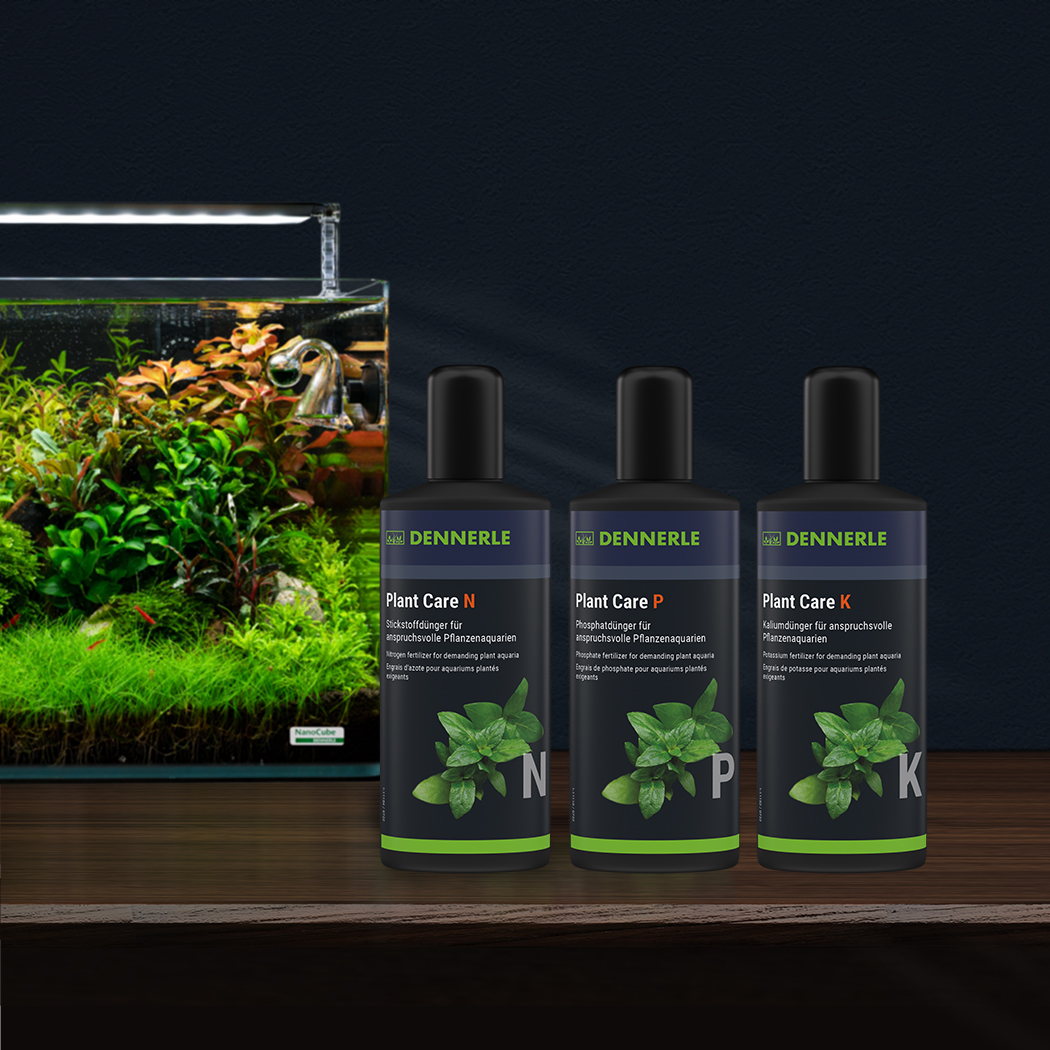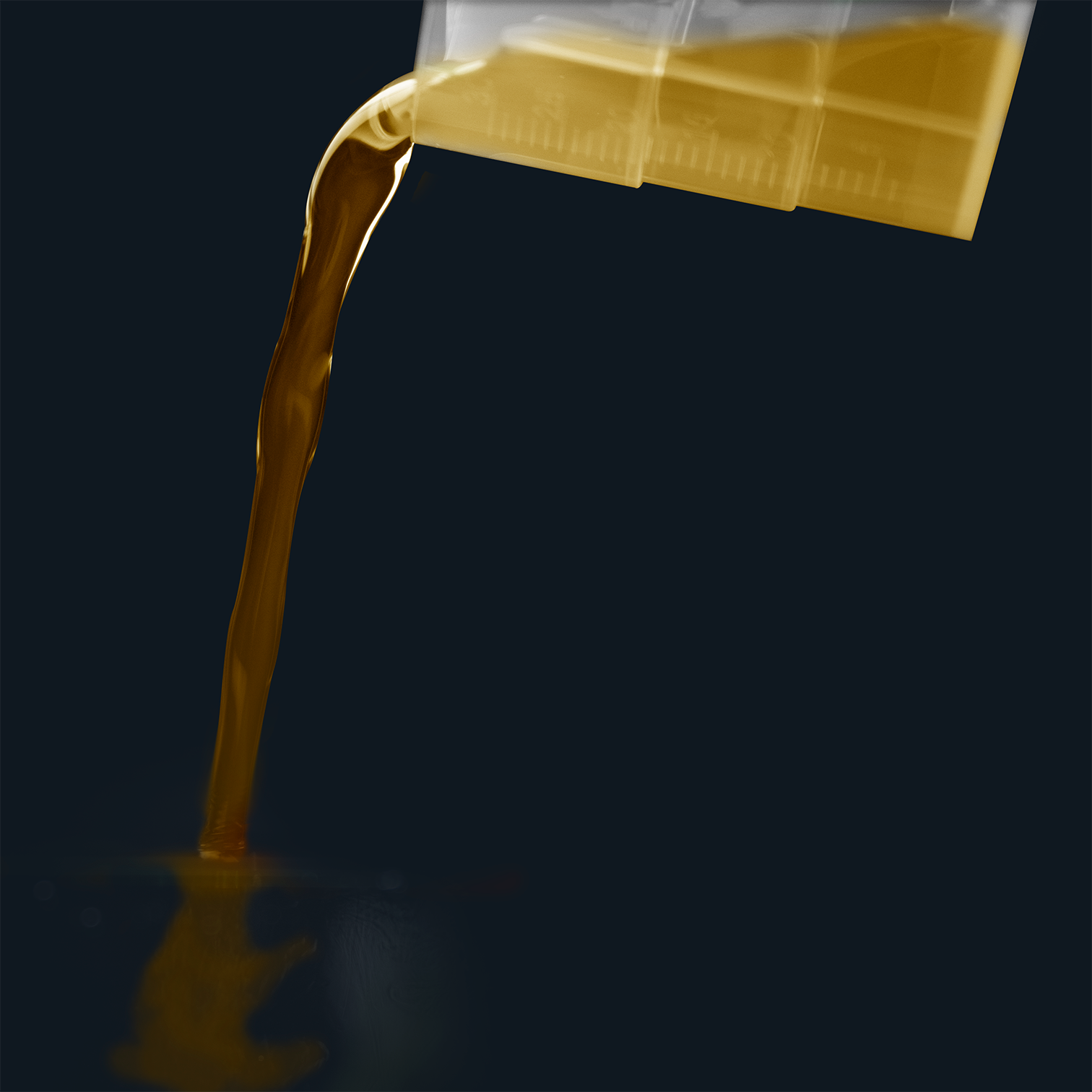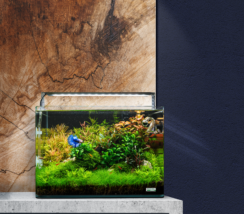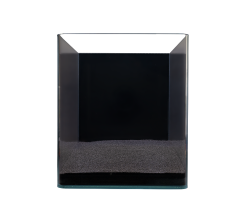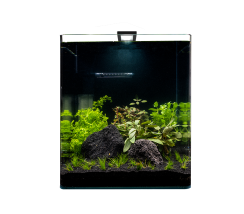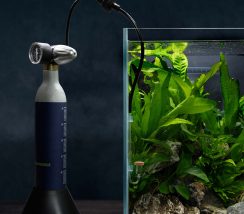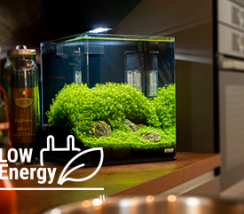Phospaht macronutrient fertilizer for planted and demanding aquaria
Aquarium plants need about 20 different nutrients to grow healthily. Phosphate is of particular importance in this respect.
Phosphate belongs to the macronutrients. Along with light and CO
2, it is one of the most important prerequisites for balanced, healthy plant growth.
What is phosphate needed for in the aquarium?
Plants need phosphate to build up numerous organic compounds. It plays a central role in energy metabolism (as ATP = adenosine triphosphate). In addition, it is an essential component of cell membranes and the hereditary substance DNA.
Since phosphate is usually in short supply in the wild, plants have developed highly effective enrichment methods. The nutrient can be stored in plant cells and remobilized when needed.
The addition of phosphate is not necessary in normal, planted community aquaria, as it usually enters the aquarium in sufficient or often even excessive amounts via food and fish excretions.
In contrast, the situation is different for demanding planted aquaria (e.g. aquascaping aquaria, Holland aquaria). They have above-average nutrient requirements, especially for macronutrients. Such plant aquariums are characterized by
- dense planting (more than 70 – 80 % of the bottom surface)
- many fast growing species
- plenty of light (30 – 60 lumen/liter or more)
- CO2 fertilization
- 30 – 50 % partial water changes per week
- no or low fish stocking (but with shrimps)
Recognize phosphate deficiency in the aquarium
Phosphate deficiency can quickly occur in these types of aquaria. The plants then stop growing. Shoots remain short, leaves are small and often turn dark green. Some species may also turn purple due to the accumulation of red leaf pigments (anthocyanins).
Remedy phosphate deficiency in the aquarium
It is therefore very useful for demanding plant aquaria to keep an eye on phosphate levels and supplement if necessary.
Each aquarium has a specific nutrient consumption depending on plant quantity, plant species, animal stocking, feeding, water changes and growth conditions (light quantity, lighting time, CO
2 addition, filter technology, etc.). The required amount of fertilizer should therefore be determined individually for each aquarium.
If the aquarium has a need for all 3 macronutrients N, P and K, the use of Dennerle
Plant Care NPK is recommended. The nutrient ratios have been selected here so that all macronutrients are absorbed by the plants in equal proportions. Even with long-term, regular use, there can be no deficiencies or detrimental accumulation of individual nutrients. Especially with macronutrients, biological balance is of particular importance, i.e. the nutrients should always be present in a certain ratio to each other. Nutrient imbalances should be avoided, as they usually lead to algae problems.
Under certain circumstances, the aquarium may have a specific need for phosphate. There are also tap waters that contain sufficient nitrogen and potassium but too little phosphate. In these cases, Dennerle
Plant Care P should be used to supply the plants specifically with phosphate.
We recommend measuring the phosphate content regularly and dosing
Plant Care P accordingly. Phosphate can be measured accurately and reliably using aquaristic tests.
Phosphate is absorbed very quickly by the plants and can be stored well. In aquariums where there has been a phosphate deficiency for a long time, this means that the added phosphate initially "disappears" quickly from the water.
After approx. 7 – 14 days of regular addition, when the plants have refilled their phosphate reservoirs, the measurable phosphate content in the aquarium water increases again. Now the phosphate addition should be reduced accordingly.
Phosphate is a real growth engine, both for aquatic plants and for algae. Phosphate can therefore be used to control both plant growth and algae growth.
It has proven effective to use phosphate as a shock fertilization with 0.1 – 0.2 mg/L. You then fertilize again only after the phosphate level has been at zero for a few days. Aquatic plants can store phosphate better than algae. With this method you can make life difficult for the unwanted algae. While the plants are supplied from their internal phosphate stores during "phosphate-deficient times" and continue to grow, the algae are "starved" and their growth is thus significantly slowed.
A macronutrient fertilizer must always be used in combination with a micronutrient fertilizer (complete iron fertilizer). For a complete nutrient supply and best possible plant growth, we recommend the combination with
Plant Care Pro.
For magnificent plant growth and healthy fish and shrimp we recommend a partial water change of 25 % to 50 % per week. This removes waste and inhibitors and prevents nutrient imbalances.
Dosage
The fertilizer can be dosed precisely and accurately: 2 ml per 100 L adds 0.2 mg/L phosphate.
The recommended concentration is in the range of 0.1 – 0.3 mg/L phosphate (max. 1 mg/L). Higher levels are rarely necessary, they usually only promote algae growth unnecessarily.
Plant Care P can be used as a weekly fertilizer or daily fertilizer.
The Dennerle Level System
With the level system you can find the right fertilizer quickly and easily.
Level 1 = For planted aquariums of type 1 with simple and few plants.
Level 2 = For heavily planted aquariums:
- of type 2 with many and demanding plants
- Type 3 from a size of 100 L with demanding plants
Add-Ons = optional care products to improve growth and health suitable for all aquarium types
Type 2 aquaria
With many and demanding plants and good growing conditions such as strong light and CO2, the needs and nutrients uptake of the plant also increase. A type of aquarium that is not only popular with aquascapers, but is also a good choice for new aquarists.
Especially for these aquariums we have developed our level-2-care. With high performance fertilizers, macronutrients and single nutrients you are prepared for any eventuality.


